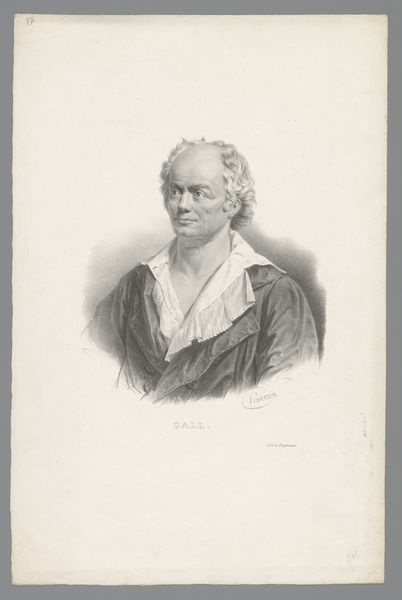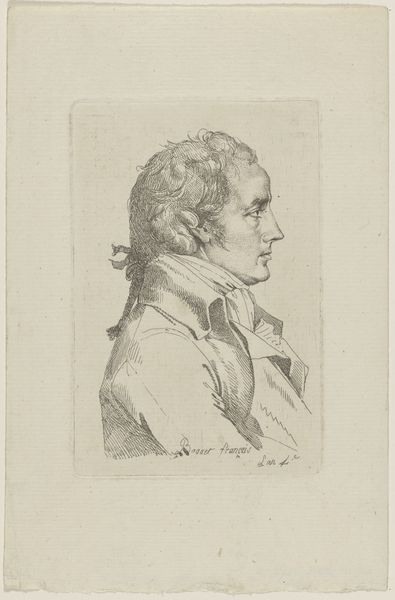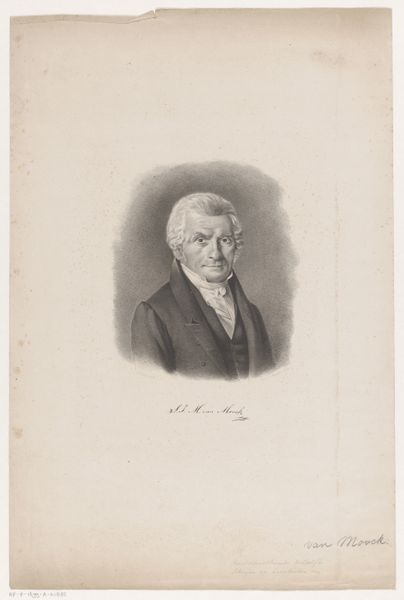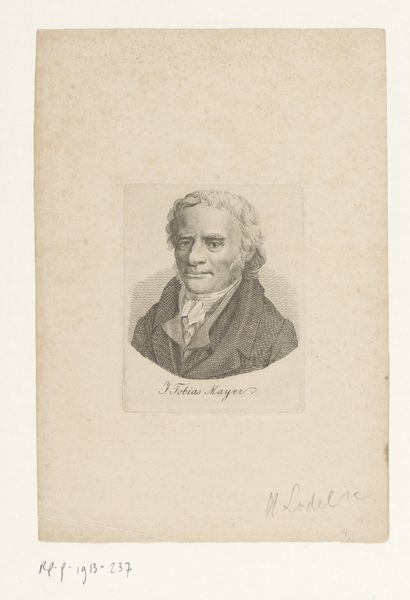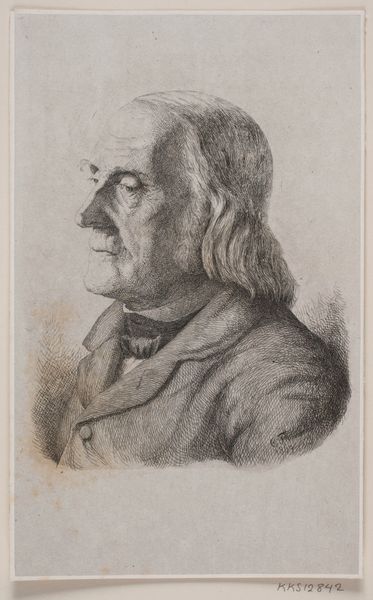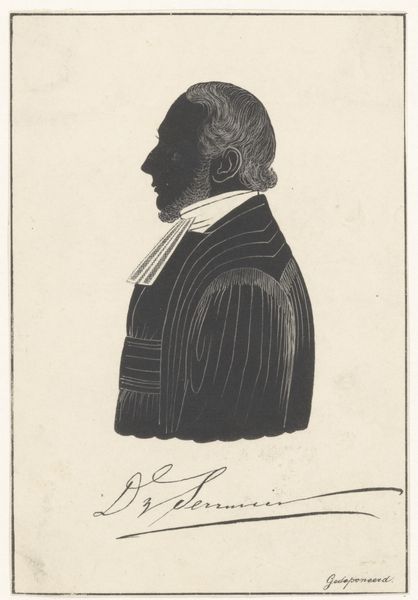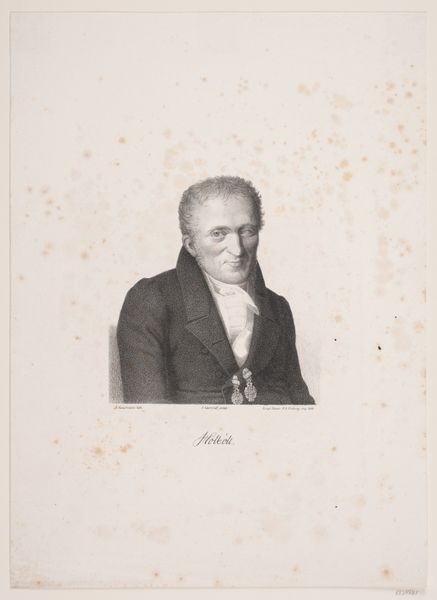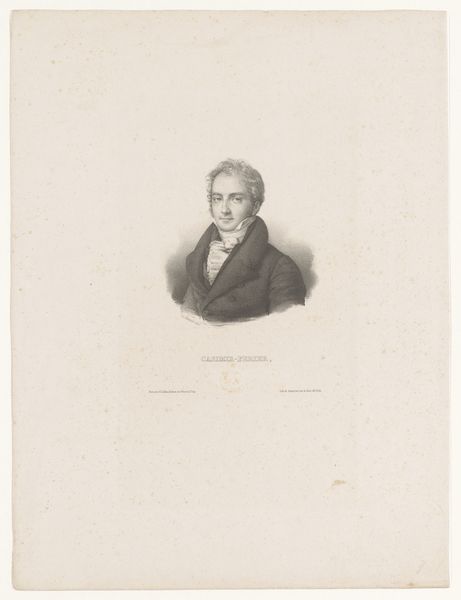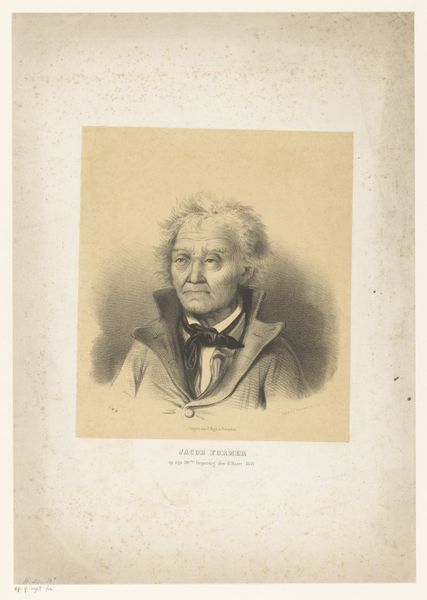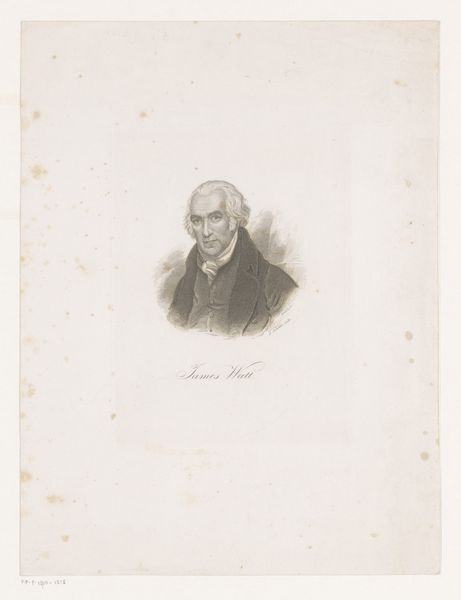
drawing, print, etching, woodcut, engraving
#
portrait
#
pencil drawn
#
drawing
# print
#
etching
#
charcoal drawing
#
pencil drawing
#
woodcut
#
line
#
portrait drawing
#
history-painting
#
engraving
Dimensions: 159 mm (height) x 135 mm (width) (bladmaal)
Editor: We're looking at a piece called "J.H. Wessel," made between 1820 and 1887, attributed to Johan Frederik Rosenstand. It seems to be some kind of print – an engraving or etching perhaps? The subject has this almost wistful, faraway look. What do you see in it? Curator: Well, isn’t he a fellow of subtle strength? The way the lines are etched gives a sense of his inner fortitude and…dare I say… perhaps a touch of melancholy? The portrait speaks of a bygone era, where character was etched onto faces as surely as the artist etched lines onto the plate. You know, looking at this image brings to mind my own great-uncle, always staring pensively out the window, convinced the world had more to offer. I can almost hear him sighing. What kind of story do you think he carries? Editor: A melancholy intellectual, perhaps? I wonder what his story might be? I notice how the artist uses lines to create depth and shadow. Curator: Exactly! See how those etched lines cluster and dance together? They build form, hint at texture... it's a conversation between light and dark. Rosenstand truly uses the medium to suggest not just what Wessel looks like, but how he feels – and, perhaps, even how Rosenstand himself feels about him. Think of the etcher’s hand, meticulously layering line upon line. Doesn't it feel incredibly intimate? Editor: It does now that you mention it. Like a secret whispered on paper. I didn’t catch that sense of intimacy initially, but I understand what you mean now. Curator: It's all a matter of perspective, isn't it? Art often asks us to meet it halfway, to lend our own experiences to the story it's telling. It's a beautiful dance, really. Editor: I hadn't thought of it that way before! Thank you. I'll never look at an etched portrait the same way again.
Comments
No comments
Be the first to comment and join the conversation on the ultimate creative platform.
